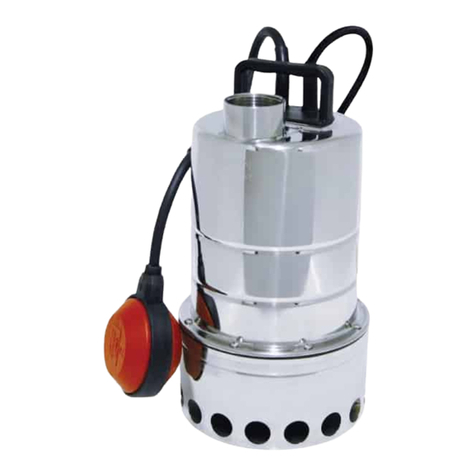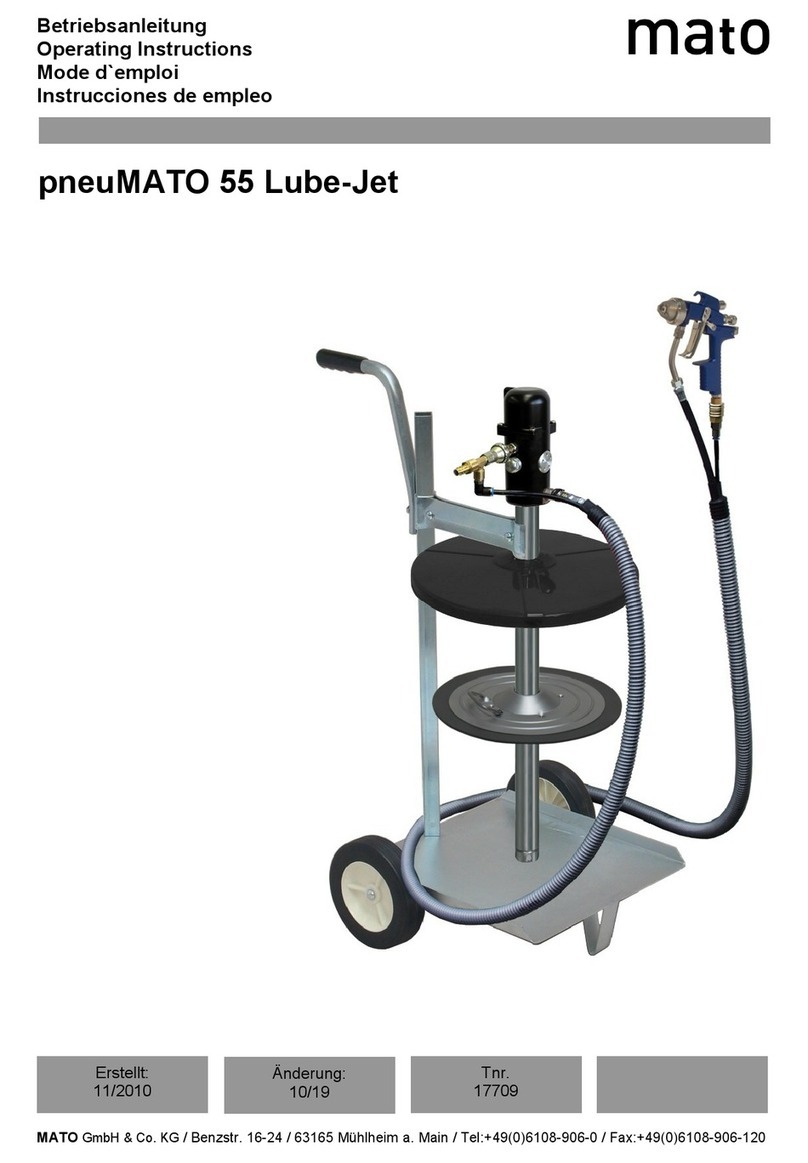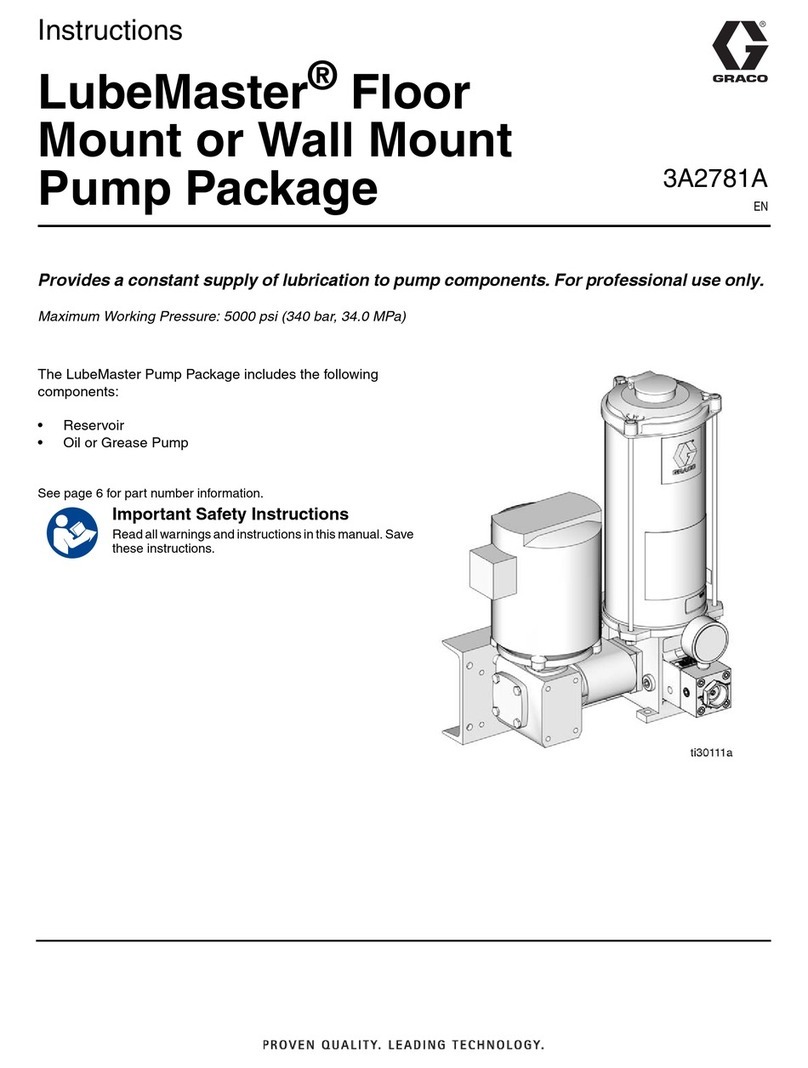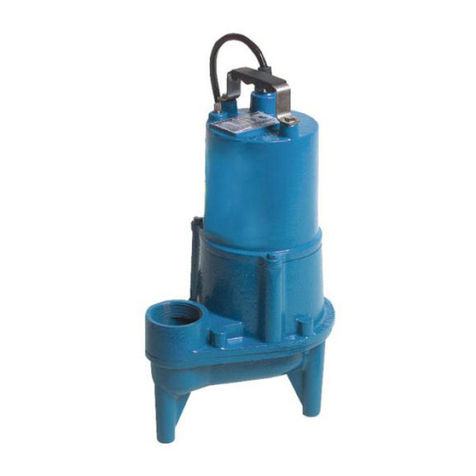GE Druck PV 411A User manual

PV 411A
K258
gGE Druck

3
4
12
2
3
1
23
3
7
1
2
6
5
4
1
8+
3

GE Druck PV 411A User Manual
i K258 Issue No. 3
Introduction
This manual provides operating instructions for the PV 411A Pneumatic/
Hydraulic hand-pump compatible with the requirements of line operation.
The GE Druck PV 411A supersedes the Druck PV411.
Safety
The manufacturer has designed this equipment to be safe when operated
using the procedures detailed in this manual. The user must not use this
equipment for any other purpose than that stated. Only use hydraulic fluids
stated in the specification.
This manual contains safety and operating instructions that must be
followed to make sure of safe operation and to keep the equipment in a safe
condition. The safety instructions are either warnings or cautions issued to
protect the user and the equipment from injury or damage. Use suitably
qualified personnel and good engineering practice for all procedures in this
manual.
Pressure
Do not apply pressure greater than the maximum safe working pressure
stated in the specification.
Technical advice
For technical advice contact the manufacturer or subsidiary.
Symbols
The following symbols mark this equipment:
Read the manual before use.
Refer to the manual.

GE Druck PV 411A User Manual
K258 Issue No. 3 ii
ABBREVIATIONS
The following abbreviations are used in this publication.
Note: Abbreviations are the same in the singular and plural.
CONTENTS
Title page
Introduction .................................................................................................... 1
Pneumatic pump........................................................................ 1
Hydraulic pump.......................................................................... 1
Specification ........................................................................... 1
Operation.......................................................................................................... 2
Pressure/vacuum configuration ................................................. 2
Connecting the pump ................................................................ 3
Selector valve ............................................................................ 3
Scissor-action handles limit adjuster ......................................... 3
Pneumatic Operation........................................................................................ 4
Volume adjuster ......................................................................... 4
Generating pneumatic pressure and vacuum............................ 4
Pressure .................................................................................... 5
Vacuum...................................................................................... 5
Hydraulic Operation.......................................................................................... 6
Fluid reservoir ............................................................................ 6
Fitting......................................................................................... 6
Filling ......................................................................................... 7
Priming the system .................................................................... 7
Vacuum priming ......................................................................... 7
Pre-filling.................................................................................... 7
Generating hydraulic pressure................................................... 8
Setting pressure relief valve....................................................... 8
Fault finding ............................................................................... 9
Annex A
Returned Goods Procedure ........................................................................... 10
Approved service agents..........................................................inside rear cover
°C degrees Celsius mbar millibar
BSP British Standard Pipe thread mm millimetre
cm centimetre mmH2Omillimetres of water
cSt centi Stoke NPT National Pipe Thread
°F degrees Fahrenheit PRV pressure relief valve
inHg inches of mercury psi pounds per square inch
lbs pounds PTFE polytetrafluoroethylene
ISO International Standards Organisation SAE Society of Automotive Engineers
kg kilogram UUT Unit under test
mmetre

GE Druck PV 411A User Manual
1 K258 Issue No. 3
Introduction
The PV 411A hand-pump generates either pneumatic pressure and vacuum
or hydraulic pressure. The scissor-action handles provide pneumatic
pressure and vacuum generation and, in the hydraulic mode, provides
hydraulic pressure generation for system priming.
Pneumatic pump
A selector valve (7) vents the system, to atmosphere, between selections of
pressure and vacuum. Operating the scissor-action handles (5) provides
the pumping stroke, for pressure generation.
A volume adjuster (3) allows small adjustments of the system pressure.
Hydraulic pump
The selector valve (7) vents the system, to the reservoir, between selections
of pressure and vacuum (used in the priming process). The volume
adjuster (3) generates the required system pressure. A fluid reservoir (see
Figure 2), screwed into the inlet port (1), marked RESERVOIR, on the top of
the hand-pump completes the hydraulic circuit. A pressure relief valve (8)
can be adjusted to set a pressure between 30 and 700 bar.
Specification
Pressure range
Pneumatic .............................................................................0 to 60 bar
Vacuum .......................................................................... 0 to -0.95 bar *
Hydraulic .............................................................................0 to 700 bar
Maximum safe working pressure................................................700 bar
Hydraulic fluid
(maximum viscosity 150 cSt at 40°C)
.............................................................................. Demineralized water
................... or mineral-based oils (SAE 40W, ISO viscosity grade 150)
Hydraulic fluids must be compatible with:
Stainless steel, anodised aluminium, nitrile rubber,
PTFE, polypropylene, delrin, acrylic and nylon.
Pressure connections:....................................... ¼” BSP parallel female
Weight (approximate): .................................................................. 1.2 kg
Dimensions
Length ....................................................................................... 260 mm
Width ......................................................................................... 150 mm
Depth......................................................................................... 100 mm
*This value assumes atmospheric pressure at 1 bar and varies depending
on atmospheric pressure.

GE Druck PV 411A User Manual
K258 Issue No. 3 2
Operation
WARNINGS
1B
EFORE
APPLYING
PRESSURE
,
MAKE
SURE
ALL
CONNECTIONS
ARE
CORRECT
AND
EQUIPMENT
IS
INTERNALLY
CLEAN
AND
FREE
FROM
DAMAGE
.
2M
AKE
SURE
THAT
ALL
EQUIPMENT
IS
TO
THE
CORRECT
PRESSURE
RATING
.
3D
O
NOT
EXCEED
THE
MAXIMUM
OPERATING
PRESSURE
STATED
IN
THE
SPECIFICATION
.
4O
BSERVE
THE
RELEVANT
HEALTH
AND
SAFETY
PRECAUTIONS
.
Note: Wherever possible, use o-ring seals in the connection ports this is the
recommended method of sealing.
Key to
1 Inlet (reservoir) port
2Outletport
3 Volume adjuster
4 Limit adjuster
5 Scissor-action handles
6Outletport
7Selectorvalve
8 Pressure relief valve (see figure 3)
Pressure/vacuum Configuration
In pressure mode, air/fluid is drawn in through the inlet port (1) on the top of
the pump and forced out through the two outlet ports (2 & 6).
In vacuum mode, the air/fluid flow is reversed as air/fluid is drawn in through
the top and rear outlet ports (2 & 6) and expelled through the inlet port (1).

GE Druck PV 411A User Manual
3 K258 Issue No. 3
Connecting the Pump
Connections can be made to the pump either directly or using the range of
adaptors supplied in the optional test kit.
Direct
The ports can be fitted with any suitable length ¼ BSP male connector,
sealing either with an o-ring at the bottom of the port or a bonded seal at the
top. Fit a suitable blanking plug to an unused port.
Swivel Adaptors (optional)
The single, ¼ BSP, swivel adaptor connects with a range of fixed adaptors.
Using the knurled grip-feature, hand-tighten (clockwise) the swivel adaptor,
until it is fully inserted.
Swivel pump head
The pump head swivels through 140° providing optimum viewing angle and
bench-top operation. Placing the pump on the bench allows greater force to
be applied to the scissor-action handles. Internal stops prevent further
rotation of the pump head.
Note: Do not use excessive force when rotating the pump head.
Selector Valve
Pressure
Turn the selector valve fully clockwise (in) position.
Vacuum
Turn the selector valve fully anti-clockwise (out) position.
Vent
Slowly turn the selector valve to the centre position.
CAUTION:
A
VOID
DAMAGING
THE
INSTRUMENT
UNDER
TEST
BY
USING
THE
VOLUME
ADJUSTER
TO
SLOWLY
RELEASE
HYDRAULIC
PRESSURE
.
Scissor-action Handles Limit Adjuster
Turning the limit adjuster (4) clockwise reduces the stroke of the scissor-
action handles (5), turning the limit adjuster (4) anti-clockwise increases the
stroke.
For maximum pneumatic pressure generation, turn the limit adjuster fully
anti-clockwise.

GE Druck PV 411A User Manual
K258 Issue No. 3 4
Pneumatic Operation
Volume Adjuster
The volume adjuster can be used in different modes:
Low pressure
With the selector valve set to vent (open), turn the volume adjuster fully anti-
clockwise (out).
Turn the selector valve to the fully clockwise (in) position to select pressure.
Turn the volume adjuster clockwise to generate pressure.
High pressure
Turn the volume adjuster to the mid-position. In this position fine
adjustments of the generated pressure can be made. Using the scissor-
action handles, generate the approximate pressure; then turn the volume
adjuster clockwise (in) to increase the pressure or turn the volume adjuster
anti-clockwise (out) to decrease the pressure.
Vacuum
Turn the selector valve fully anti-clockwise (out) position.
Turn the volume adjuster to the mid-position. In this position fine
adjustments of the generated vacuum can be made.
Using the scissor-action handles, generate the approximate vacuum; then
turn the volume adjuster clockwise (in) to decrease the vacuum or turn the
volume adjuster anti-clockwise (out) to increase the vacuum.
For low vacuum use the volume adjuster only.
Generating pneumatic pressure and vacuum
Connect the pump as detailed on page 3.
Notes
1. Compressing a gas generates heat. Gas heated or cooled in
an enclosed volume causes a pressure change. It is important
to allow enough time for the heated gas to cool and the
pressure to stabilize.
2. The pumping required to generate a pressure depends on the
volume of the system. Therefore, keep the system volume to a
minimum.

GE Druck PV 411A User Manual
5 K258 Issue No. 3
Pressure
1 Turn the selector valve (7) fully clockwise (in) position.
2 Operate the scissor-action handles (5) to generate the approximate
pressure, allow time for thermal stabilization.
3 If necessary, use the volume adjuster (3) to adjust the required
pressure.
4 After attaining the required pressure operate the scissor-action
handles (5) to generate a higher pressure. Alternatively, vent the
pressure to atmosphere by slowly turning (anti-clockwise) the
selector valve (7) to the centre position.
Vacuum
1 Turn the selector valve (7) fully anti-clockwise (out) position.
2 Operate the scissor-action handles (5) to generate the approximate
vacuum, allow time for thermal stabilization.
3 If necessary, use the volume adjuster (3) to adjust the required
vacuum.
4 After attaining the required vacuum operate the scissor-action
handles (5) to generate a higher vacuum. Alternatively, vent
atmosphere into the vacuum by slowly turning (anti-clockwise) the
selector valve (7) to the centre position.
After completion, depressurize the pump and disconnect from the pipes and
equipment.

GE Druck PV 411A User Manual
K258 Issue No. 3 6
Hydraulic Operation
WARNING
OBSERVE ALL SAFETY PRECAUTIONS AND PROCEDURES STATED IN
LOCAL ORDERS.
CAUTIONS
D
O
NOT
MIX
HYDRAULIC
FLUIDS
.
O
NLY
USE
COMPATIBLE
FLUIDS
,
REFER
TO
THE
SPECIFICATION
.
O
NLY
FIT
APPROPRIATE
SEALS
ON
PRESSURE
CONNECTIONS
.
D
AMAGE
CAN
BE
CAUSED
IF
EQUIPMENT
CONNECTED
TO
THIS
PUMP
IS
CONTAMINATED
. A
VOID
PARTICULATE
CONTAMINATION
.
AFTER USE, THE PUMP SHOULD BE CONSIDERED CONTAMINATED WITH
HYDRAULIC FLUID.
Note: Wherever possible, use o-ring seals in the connection ports, this is the
recommended method of sealing.
Key to
1 Reservoir cover lock nut
2 Reservoir cover
3O-ring
4Bleedhole
Fluid Reservoir
The main body of the reservoir is transparent acrylic providing a clear view
of the contents.
The reservoir can be removed from the pump without the need to empty the
fluid, a self-sealing connection prevents leakage. The spring-loaded reservoir
cover (2) seals under atmospheric pressure conditions, but vents excess
internal pressure harmlessly in the event of inadvertent pressurization.
The reservoir, connects to the inlet port on the top of the pump and supplies
fluid to the pump system for pressure generation.
In vacuum mode, used in priming, the fluid flow is reversed, fluid is drawn
from the two outlet ports and through to the inlet port and the reservoir.
Fitting
Make sure that the correct o-ring seal (3) is fitted to the inlet port to prevent
leakage. Screw the reservoir (clockwise) into the inlet port marked
RESERVOIR.
Note: Demineralized water is used to test the pump at manufacture. On
shipment, there will be traces of demineralized water in the system.

GE Druck PV 411A User Manual
7 K258 Issue No. 3
Filling
Unscrew the reservoir cover lock nut (1) and remove the reservoir cover (2).
Using clean, recommended fluid fill the reservoir to approximately 2/3 full.
Refit the reservoir cover and re-tighten the reservoir cover lock nut (1).
Connect the required pipes and equipment to the outlet ports.
Priming the system
There are two methods: vacuum priming to extract the air or pre-filling the
system.
Notes
1. If air remains in the system, full pressure cannot be achieved as the air
in the fluid compresses. Air must be removed from the system fluid.
2. Both priming methods require the pump to be held in the vertical
position to keep the reservoir bleed hole (4) in fluid. Do not allow air to
enter the system through this bleed hole (4).
Vacuum priming
Connect the equipment as detailed on page 3.
Air can be removed using the vacuum facility on the pump.
Note: This method should not be used with vacuum-sensitive equipment.
Turn selector valve fully out, anti-clockwise (vacuum) position.
Turn the volume adjuster valve fully anti-clockwise (out) position.
Pump until bubbles stop appearing in the reservoir, (this generates a
vacuum in the system).
Turn the selector valve fully in, (this action releases the vacuum and rapidly
fills the system with fluid from the reservoir).
The pump and connected system is ready for use.
Pre-filling
Connect the equipment as detailed on page 3.
Turn the selector valve fully clockwise (in) position.
Loosen the reservoir cover lock nut (1) to open the reservoir cover (2) and
let atmospheric pressure into the top of the reservoir.
Open the bleed valve on the UUT.
Carefully operate the scissor-action handles to fill the system. Stop
pumping when fluid comes out of the bleed valve.
Close the bleed valve on the UUT.
If necessary, top-up the reservoir to the 2/3 level with clean fluid.
Secure the reservoir cover by tightening the reservoir cover locknut (1).
The pump and connected system is ready for use.

GE Druck PV 411A User Manual
K258 Issue No. 3 8
Generating Hydraulic Pressure
Note: Pressurizing a fluid generates heat. A fluid heated or cooled in an
enclosed volume causes a pressure change. Allow enough time to
thermally stabilize.
If necessary, set the PRV see following section.
Open the selector valve (7) anti-clockwise 1 turn.
Screw the volume adjuster (3) fully out (anti-clockwise).
Close the selector valve (7).
Use the scissor-action handles (5) to generate the initial pressure.
Then turn the volume adjuster (3) clockwise to generate the required
pressure, allow time for thermal stabilization.
To reduce the pressure, turn the volume adjuster (3) out (anti-clockwise) to
the required pressure.
After completion, turn the volume adjuster (3) fully out (anti-clockwise) and
turn the selector valve (7) to depressurize the pump. Disconnect from the
pipes and equipment.
Setting Pressure Relief Valve
The pressure relief valve (PRV) can be set at pressures from 30 to 700 bar.
CAUTION
DONOT EXCEED 700 BAR THIS CAN DAMAGE THE INTERNAL SEALS OF
THE PRV AND THE PV411A.
If the system pressure exceeds the set pressure, the PRV opens and vents
fluid through the inlet port to the reservoir. When the system pressure
decreases below the set pressure, the PRV closes.
Key to
1 PRV locking screw (quantity 2)
2 PRV lock nut (with left-hand thread)
3 PRV adjusting nut (with left-hand thread)
To set the PRV:
1. Connect a suitable pressure indicator to either outlet port (2) or (6).
Fit a blank to the unused port.
2. Increase pressure until the relief valve operates.
3. Loosen the two PRV locking screws (1).
4. Loosen the PRV lock nut (2) by turning clockwise.
5. Set the relief pressure by turning the PRV adjusting nut (3).

GE Druck PV 411A User Manual
9 K258 Issue No. 3
To increase pressure
Turn the PRV adjusting nut (3) anticlockwise.
To decrease pressure
Turn the PRV adjusting nut (3) clockwise.
6. After setting the PRV, hold the adjusting nut (3) in position and tighten
the locking nut (2).
Note: The locking nut has a left-hand thread.
7. Check the operation of the PRV. If necessary reset the PRV.
8. Secure the locking nut by tightening the two locking screws (1).
Fault Finding
If the system pressure reduces, check the following:
1. Check the selector valve (7) is in the correct position and properly
tightened.
2. Allow sufficient time after pressure generation for the temperature to
stabilize. The larger the system volume, the longer the time for
thermal stability.
3. Check the adaptors, flexible pipe and connections between the pump
and equipment under test for leaks. Tighten any loose joints and
replace any seals that are worn or damaged.
4. In hydraulic mode, if the volume adjuster can be wound fully in, but
maximum pressure cannot be achieved, there is probably air trapped
in the system. Re-prime, and repeat.
5. Check PRV pressure setting.
If, for any reason, a fault occurs within the pump, it is recommended that the
equipment be returned to an appointed agent.

GE Druck PV 411A User Manual
K258 Issue No. 3 10
Annex A
Returned goods procedure
Should the unit become unserviceable and require repair it can be returned
to the GE Druck Service Department.
Please contact our Service Department, either by ‘phone or fax, to obtain a
Returned Goods Authorization (RGA) number, providing the following
information:
Product (i.e. PV 411A)
Pressure medium (i.e. pneumatic, hydraulic)
Serial number
Details of defect/work to be undertaken
Operating conditions
Safety Precautions
You must also tell us if the product has been in contact with anything
hazardous or toxic and the relevant COSHH references and precautions to
be taken when handling.
Important notice
Service by unauthorized sources will affect the warranty and may not
guarantee further performance.
Table of contents
Popular Water Pump manuals by other brands
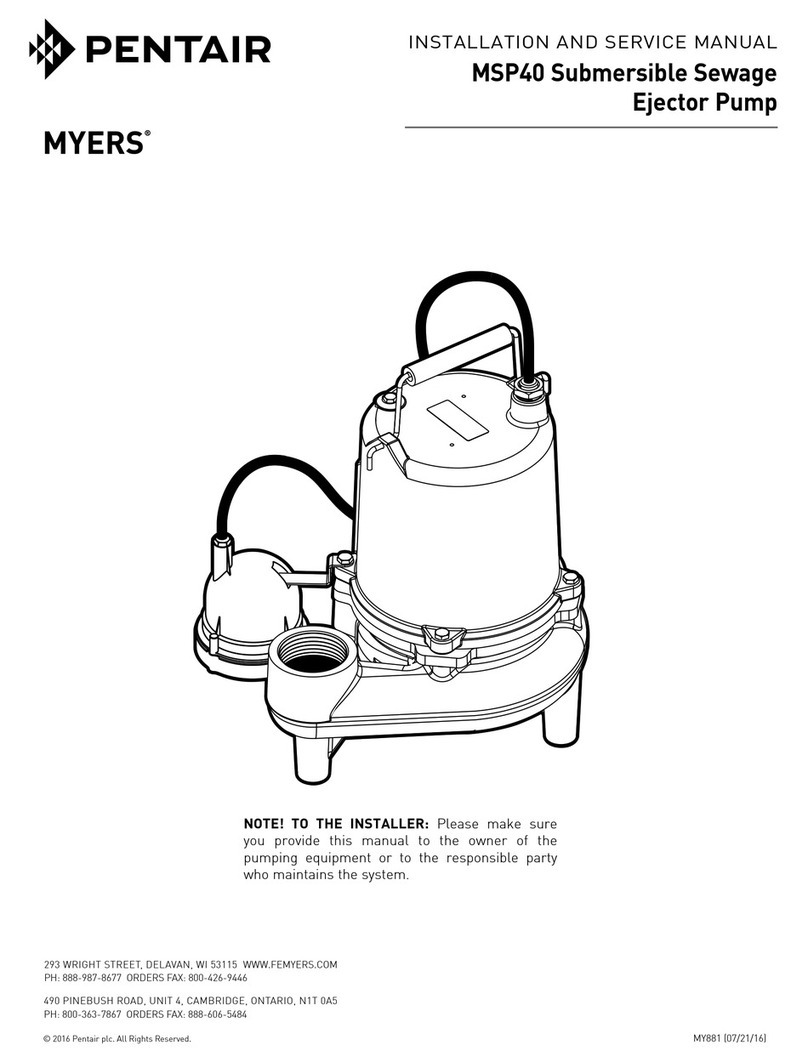
Pentair
Pentair Myers MSP40 Installation and service manual
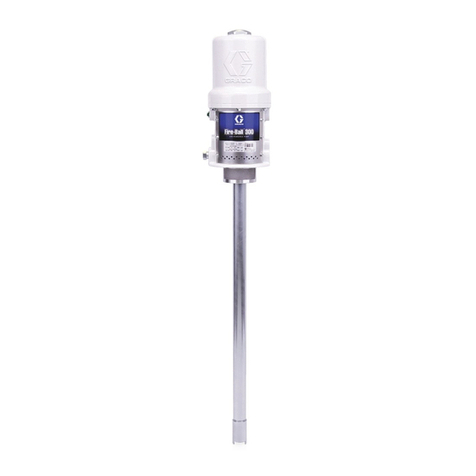
Graco
Graco FIRE-BALL instructions

Pentair
Pentair MNG3SC Installation & operation manual
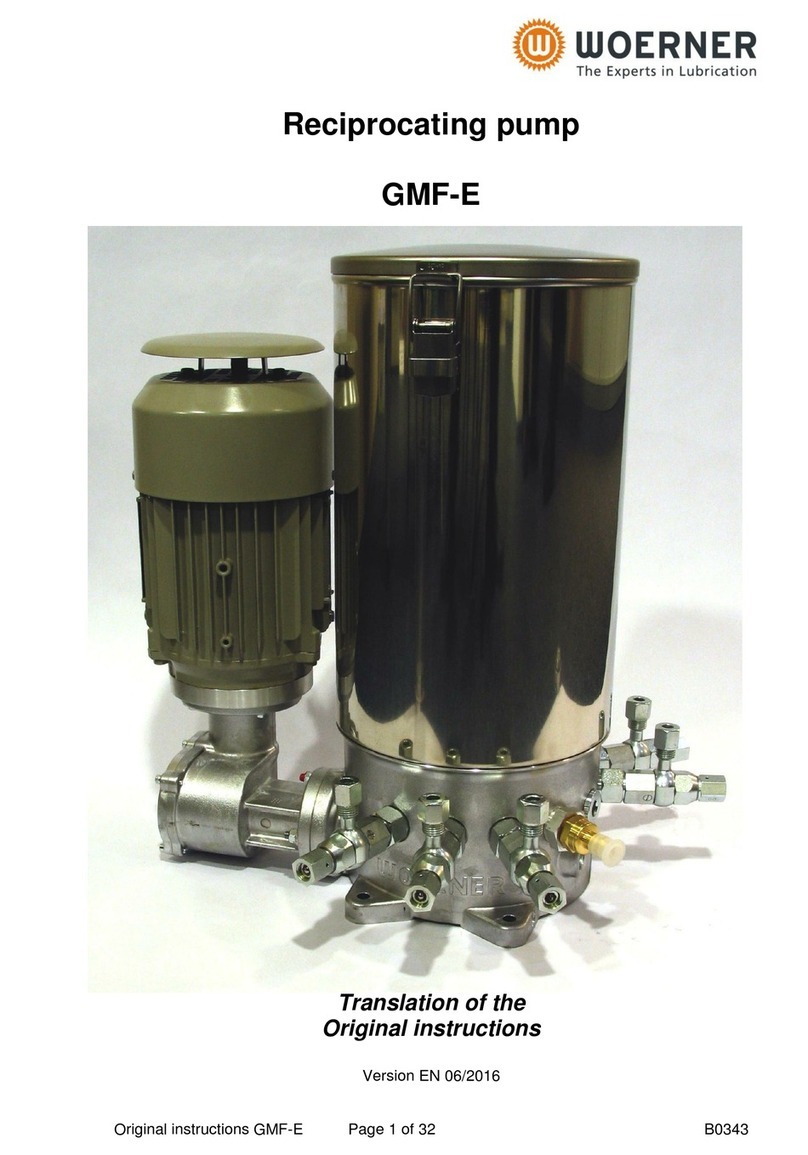
WOERNER
WOERNER GMF-E Translation of the original instructions
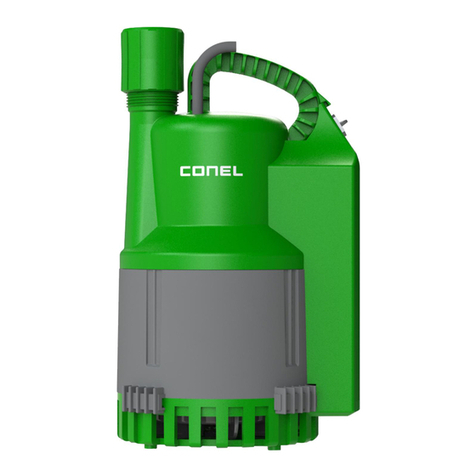
Conel
Conel FLOW TP12-A Installation and operation instructions
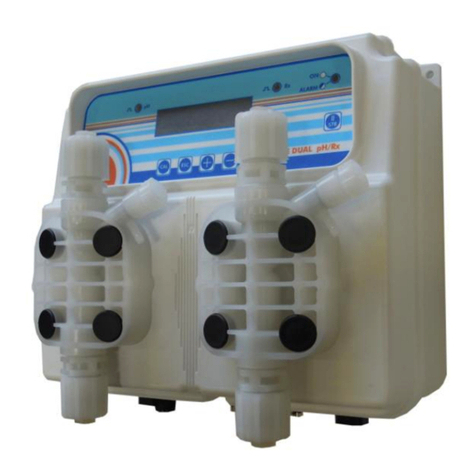
Verderdos
Verderdos ME-DUAL-PH/CL Programming instructions
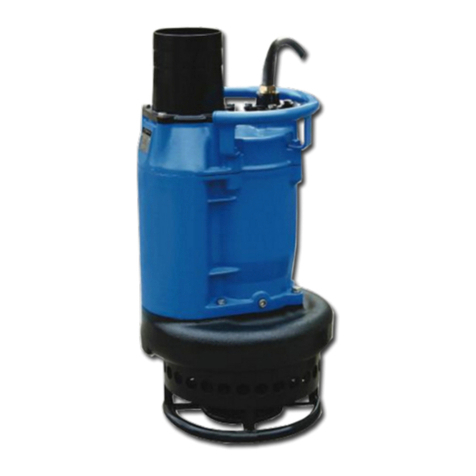
PYD Electrobombas
PYD Electrobombas KBS Series Operating and maintenance manual

Pentair Jung Pumpen
Pentair Jung Pumpen Compli 120/2 M instruction manual
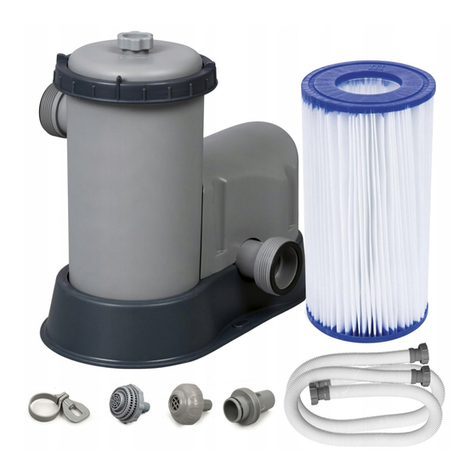
Bestway
Bestway FlowClear 58389 owner's manual
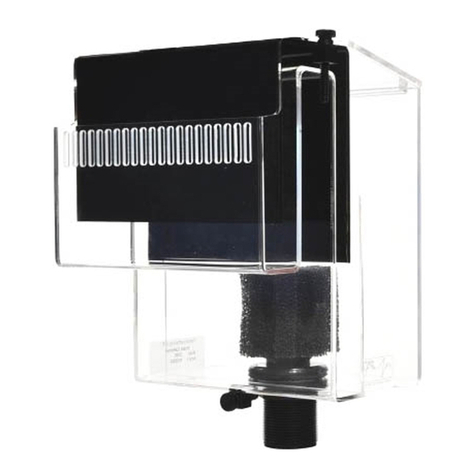
CPR
CPR CS90 quick start guide
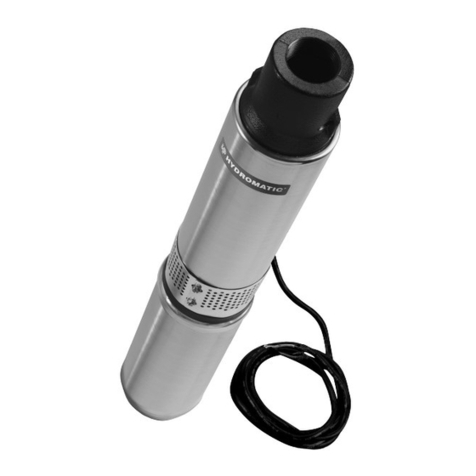
Hydromatic
Hydromatic Pentair Water HE Series quick start guide

Sherwood
Sherwood 22000 Series Technical guide
